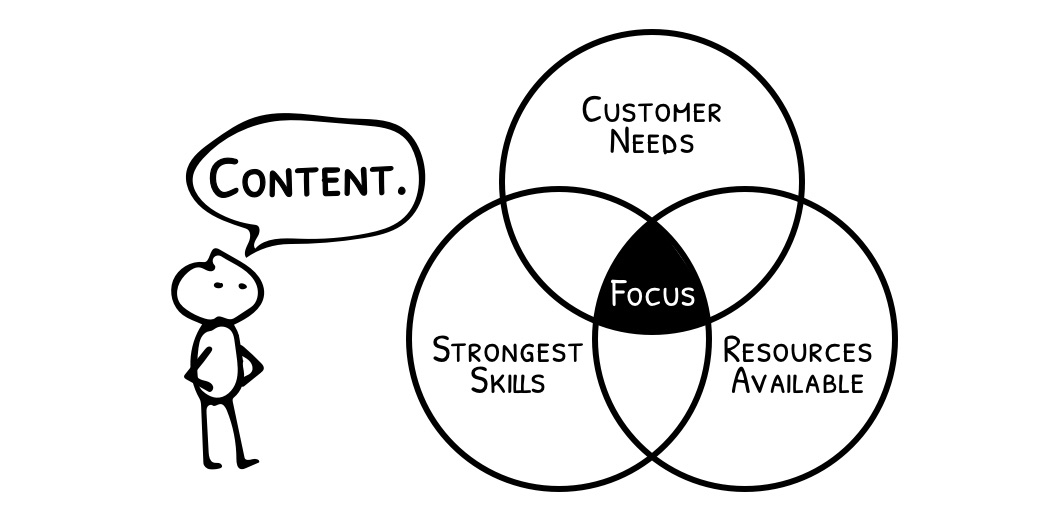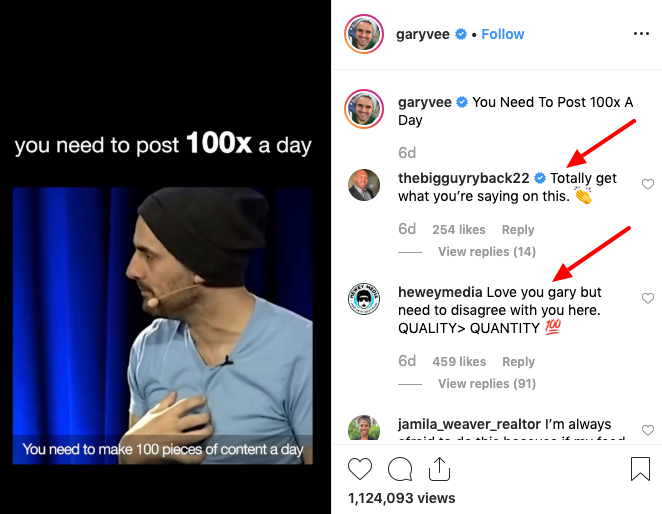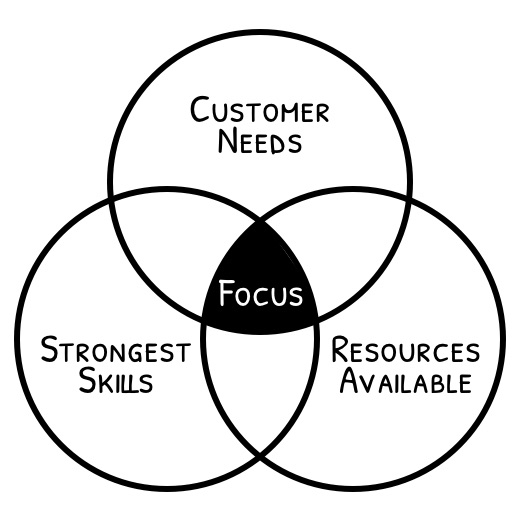
When it comes to content channels, our advice has always been the same:
Unless you have the time, budget, and resources to commit to a channel the default answer to the question “Should I be on (name a channel / social network)”, is NO.
On the surface, it might seem like this goes against the grain on current content trends. But it’s really about helping to make content efforts successful.
The benefits for brands to create content is clear:
- It builds trust between your brand and your audience.
- It creates a searchable footprint for your brand in the competitive landscape.
- It allows your business to develop a consistent, ownable flow of inbound traffic.
There are some folks like Gary Vaynerchuk who push the idea of content creation to the outer limits. He recently advocated for folks to post 100 pieces of content a day.
The reactions were not surprisingly mixed:

Gary is famously extreme in his ideas, but his point is that creating content is like buying up real estate with your audience. The more quality real estate you develop the easier it is to get your audience’s attention.
Whether you want to go with a rocket fuel approach or something more conservative, you still have to embrace the same key component.
Consistency.
There’s no question that content is valuable for your business. But it’s not enough to recognize that need, you have to go out and execute on it.
That’s the critical chunk of the statement at the top, “to commit”. And that’s why Gary didn’t say “you should post 100 pieces of content for one single day.”
The question then becomes whether you have the strategy and resources to execute on a content channel not just this week, this month, or even this year, but for the long run.
The easiest thing in the world is to start a content channel. A blog, a social account, a newsletter.
The hard part is to maintain those efforts over time.
The digital landscape is littered with corpses of abandoned content channels from businesses.
Blogs with four posts from the same day (aka. website launch day), followed by months or years of nothing.
Social channels with a couple weeks of excited posts and then tumbleweed.

In addition to the obvious fact that you can’t gain benefits of content if you don’t produce it, there’s another issue this causes. It leaves your audience and potential customers asking questions like, “Have they not had anything new to say in the past year?” Or worse, “Are they still in business?”
There are few things that erode your brand’s trust with customers like inconsistency.
The excuse of “Well, we got too busy with other things” doesn’t fix that. Potential customers don’t see your team working away in your office. All they see is what you’ve presented to them.
The bottom line is that content is a long term game. It takes time for search engines to discover content and catalog it. It takes time to build an audience. It takes time to build authority. It takes time to build trust. It takes time to see results.
That leaves us with two critical truths:
- Content is incredibly valuable for the long term viability and growth of your brand
- To realize the value of content requires consistency
To determine the role of content for your brand, you have to find the intersection of three things:
- What type of content would best serve your brand strategy (i.e. What do your customers need)
- What type of content are you best suited to create (i.e. What would best take advantage of your skills)
- What type of content can you commit to over time (i.e. What level of resources do you have available)

And this is why Map & Fire launched an Instagram channel 4 years into our business.
Early on, we knew Instagram had potential value for our customers. We knew we could create some sort of posts. But we didn’t have the resources to commit to it and sustain it.
Instead, we focused our content energy into blog articles and newsletters. That was an area that hit the sweet spot of factors for us: aligns with our brand strategy, we were well suited to create it, and we could sustain it.
As a result, we now see consistent organic traffic from those posts which generates leads for our business.
The other hidden benefits of our early focus on blog content are:
- We’ve generated a backlog of content that we can repurpose for other channels like Instagram. This helps ease the burden of relying exclusively on new content.
- We were able to test and refine the tone and visual style of our brand in a limited capacity rather than trying to do it across a lot of channels at once.
Again, this makes it much easier to expand now to other areas.
Your brand should still experiment with content
An important caveat to the consistency-maxim is that you can and should experiment with content.
Sometimes it’s not obvious whether a particular content channel or medium will work well for your brand. You may need to test different types of execution or production styles. You may need to test a particular channel to see if your audience engages there or not.
You can’t always know up front if a particular concept or channel will provide good return for your business. Some channels, like blog content, are almost no-brainers for any brand. But others could look like a good fit on the surface and not provide the return to make them worthwhile.
We didn’t have to wait 4 years to start our Instagram experiment. But at least now we can give it sufficient time to test for results. We’re not looking for a quick fix.
Even if your brand just wants to experiment, it still takes consistency and time to validate the effort.
Hopefully our Instagram experiment helps us connect with a bunch of new people. Only way to find out is to get started.
To help in our test, give us a follow, like a post, and leave a comment!
View this post on Instagram

Crystallize Your Brand Strategy
If you need help with your brand strategy to focus your content efforts, reach out for a free consultation. We’ll help transform your best business thinking into a shareable, growth-oriented guide. Click below to learn more about the Brand Guidebook process.

